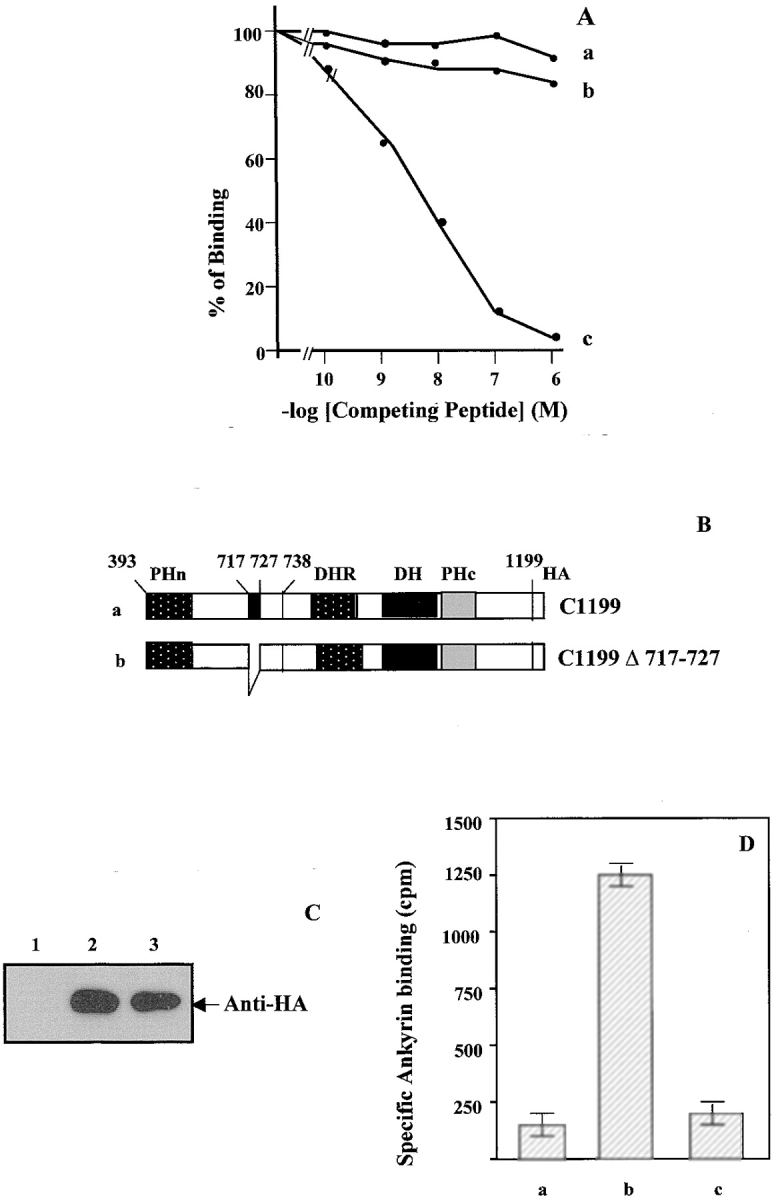Figure 7.

Identification of the ankyrin binding domain of Tiam1. (A) 125I-labeled Tiam1 was incubated with ankyrin-coated beads in the presence of various concentrations of unlabeled synthetic peptide (GEGTDAVKRSL, corresponding to the sequence between amino acids 17 and 727 of Tiam1) (c), or the scrambled sequence (GRATLEGSDKV; a), or another Tiam1-related peptide (GTIKRAPFLGP, corresponding to the sequence between amino acids 399 and 409 of Tiam1; b) as described in Materials and Methods. The specific binding observed in the absence of any of the competing peptides is designated as 100%. The results represent an average of duplicate determinations for each concentration of the competing peptide used. (B) Schematic illustration of the in vitro mutagenesis approach used in this study. Both C1199 Tiam1 (a) and C1199 Tiam1 717-727 (lacking the sequence between amino acids 17 and 727; b) were constructed according to the strategy described in Materials and Methods. (C) Anti-HA–mediated immunoblot of SP-1 cells transiently transfected with vector alone (lane 1), or HA-tagged C1199 Tiam1 cDNA (lane 2), or HA-tagged C1199 Tiam1 717-727 cDNA (lane 3). (D) The amount of 125I-ankyrin binding to anti-HA–mediated immunoprecipitates isolated from SP-1 cells transfected with vector alone (a), or HA-tagged C1199 Tiam1 cDNA (b), or HA-tagged C1199 Tiam1 717-727 cDNA (c).
